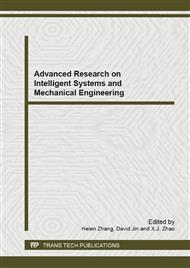p.183
p.189
p.193
p.197
p.203
p.207
p.212
p.216
p.221
Fuel Leaking Analysis of Fuel Tank by Projectiles Impact with Mechanical Properties of Projectiles
Abstract:
For making sure the dry bay ignition and fire, it’s necessary to calculate the number and the sizes of the droplets and determine the mass flow rate of the fuel induced by high-speed impact and penetration of a rigid projectile into fuel tank. An analytical model is founded and the method for calculating the initial leaking velocity of the fuel is determined. It gives the equation for calculating the drop size distributions of fuel and the Sauter mean diameter (SMD) of droplets, through the Maximum Entropy Theory and the conservation for mass. Using the Harmon’s equation for SMD,the fuel droplets SMD can be calculated. Results shows that the initial leaking velocity of the fuel is about linearly increasing with the velocity of the projectile, the SMD of fuel droplets increases with the hole size of the fuel tank which induced by the penetration of the projectile and linearly decreases with the velocity of the projectile. The results can be used for the ignition and fire analysis of the dry bay adjacent to fuel tanks.
Info:
Periodical:
Pages:
203-206
Citation:
Online since:
January 2013
Authors:
Price:
Сopyright:
© 2013 Trans Tech Publications Ltd. All Rights Reserved
Share:
Citation:


